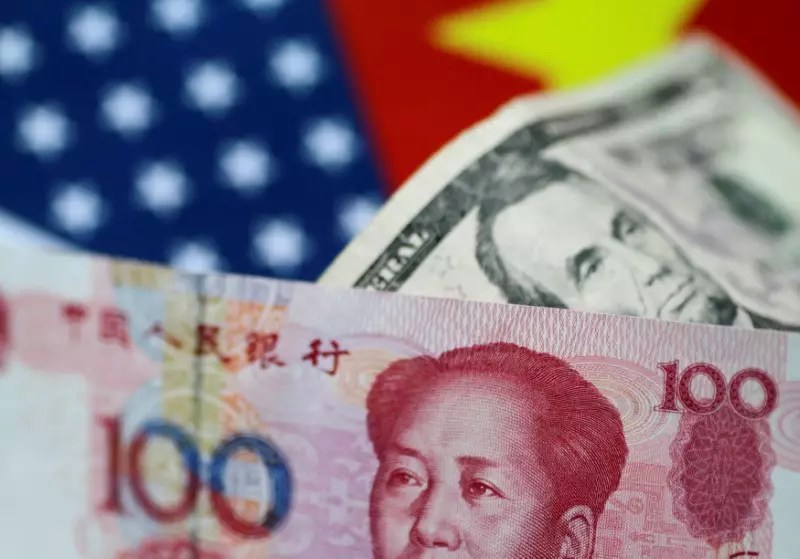The recent market uncertainty has left most Asian currencies relatively stable on Wednesday. Traders are bracing themselves for upcoming cues on U.S. interest rates from the Federal Reserve and crucial inflation data. The sentiment towards Asia has been hindered by fears of renewed U.S.-China trade tensions. Reports of the White House planning stricter curbs on chip sales to Russia have added to the apprehension in the market. The possibility of Chinese resellers being affected by these developments has led to a cautious approach by investors.
Chinese inflation data has also contributed to the uneasy atmosphere in the market. The Chinese yuan’s performance against the dollar has been closely monitored, with the USDCNY pair hovering near six-month highs. The news of increased U.S. trade scrutiny has further dampened investor sentiment. The recent implementation of higher tariffs on various Chinese industries by the U.S. government has only exacerbated the situation. Additionally, mixed Chinese inflation data indicates potential challenges for the country’s economic recovery. While producer price index inflation has shown signs of improvement, consumer price index inflation has remained subdued. This discrepancy raises doubts about the strength of consumer spending, a crucial driver of the Chinese economy.
Against the backdrop of uncertainty over U.S. interest rates, most Asian currencies have witnessed marginal movements against the dollar. The Japanese yen’s performance against the USDJPY pair has seen a slight uptick, remaining well above 157 yen. Despite hotter-than-expected PPI data, the Japanese currency has not received significant support. The upcoming Bank of Japan meeting is expected to maintain current interest rates, but there may be indications of a potential policy tightening through a reduction in bond purchases. The Australian dollar has shown a slight increase against the greenback, while the South Korean won and Singapore dollar have experienced relative stability. On the other hand, the Indian rupee has struggled, hovering near record highs due to recent volatility following unexpected outcomes in the 2024 general elections.
The dollar’s resilience has been apparent in the dollar index and dollar index futures, which have steadied near one-month highs. The anticipation of the Federal Reserve’s decision has led to this rebound in the dollar’s performance. The Fed is expected to maintain current interest rates but could adopt a more hawkish stance on future rate adjustments. Factors such as persistent inflation and a robust labor market may influence the Fed’s decision-making process. The upcoming CPI data for May will also provide insights into the inflationary pressures in the U.S. economy. If inflation remains elevated, the Fed may delay any rate cuts, further bolstering the dollar’s position in the market.
The impact of U.S.-China trade tensions on Asian currencies cannot be underestimated. The market volatility and uncertainty surrounding both geopolitical developments and monetary policy decisions have kept investors on edge. As traders await crucial cues from the Federal Reserve and economic data releases, the stability of Asian currencies remains fragile. The resilience of the dollar and its potential for further strengthening highlight the challenges faced by Asian economies in navigating through these turbulent times.


Leave a Reply